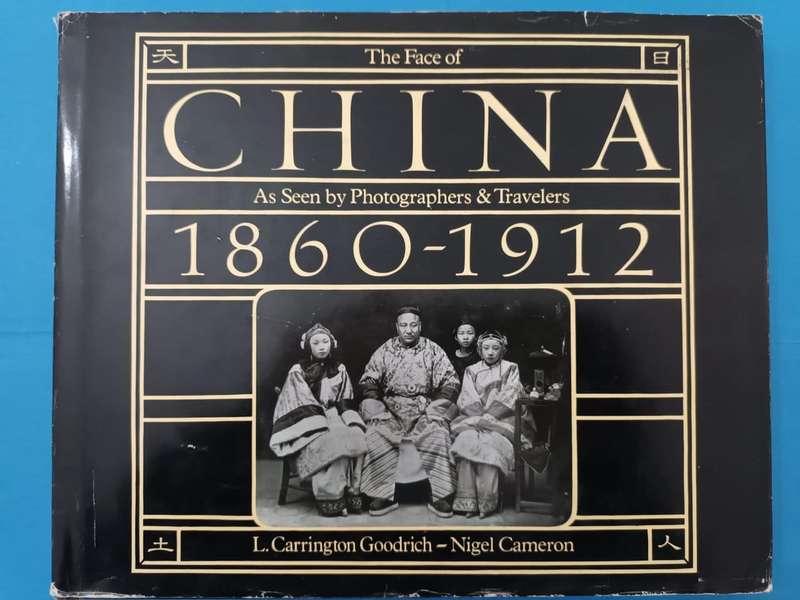
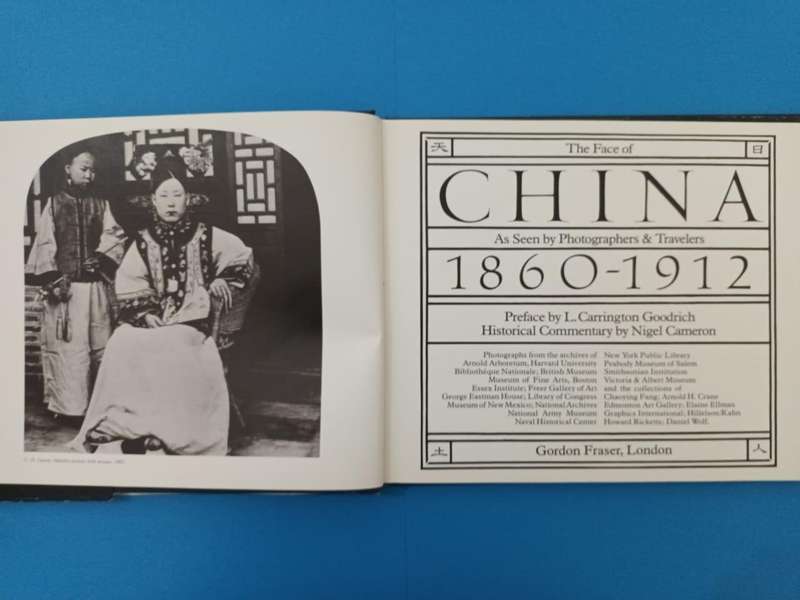
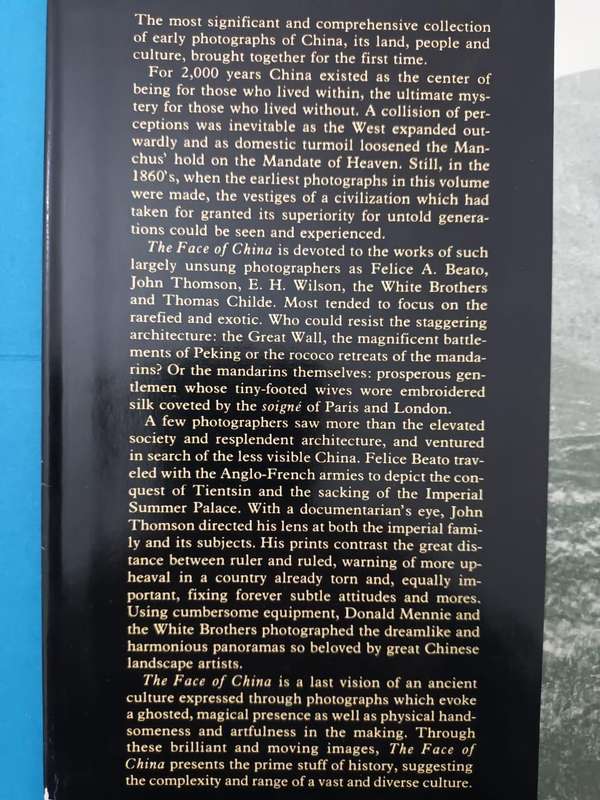
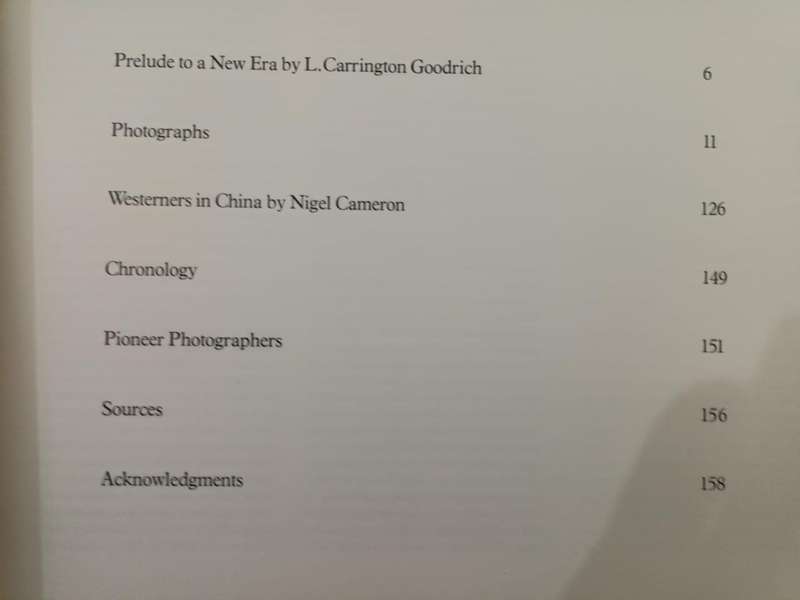
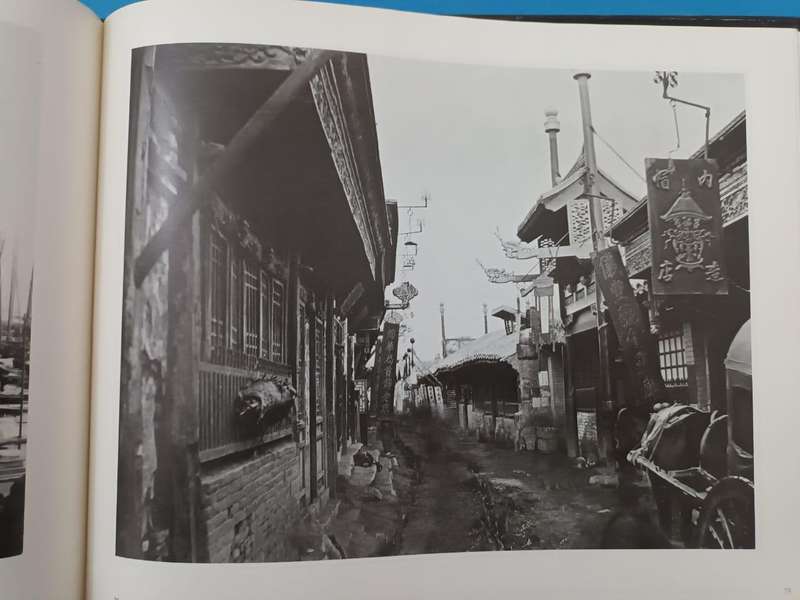

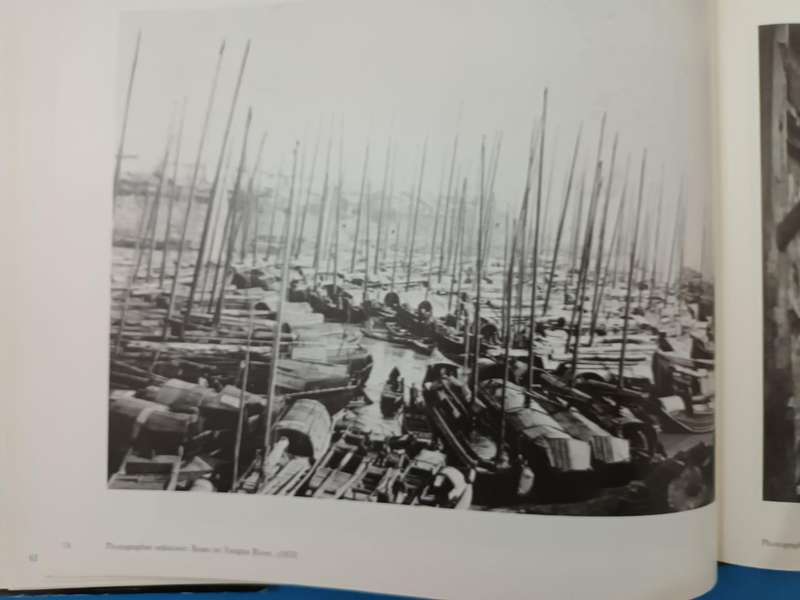

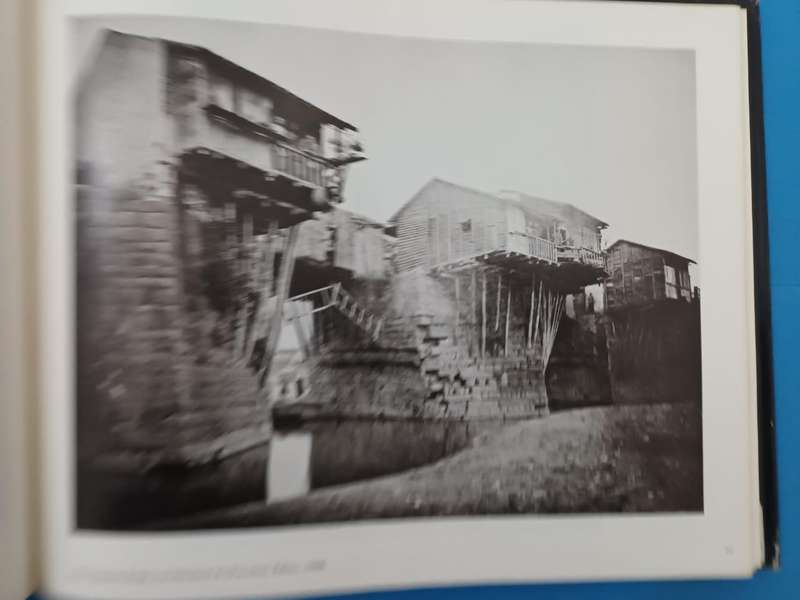

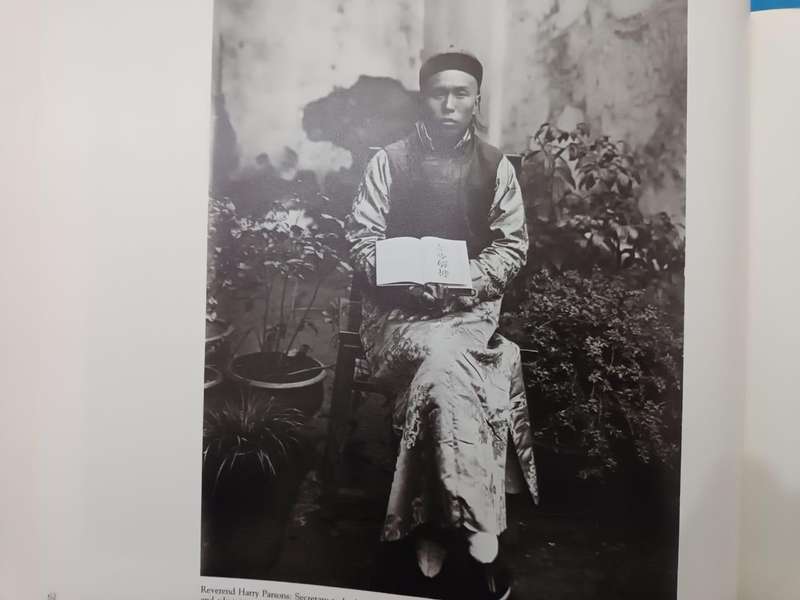


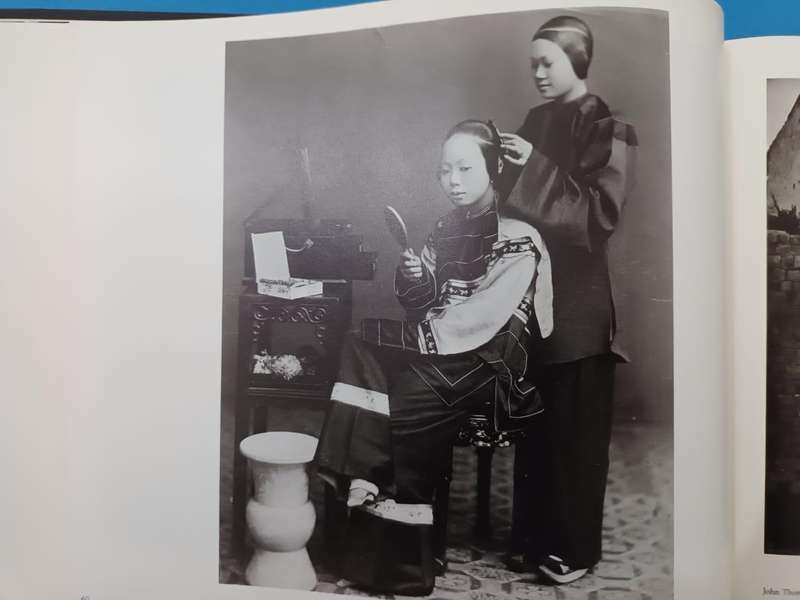






China, As Seen by Photographers & Travelers, 1860 - 1912
Check my rate
| Main centres: | 1-3 business days |
| Regional areas: | 3-4 business days |
| Remote areas: | 3-5 business days |




















| Main centres: | 1-3 business days |
| Regional areas: | 3-4 business days |
| Remote areas: | 3-5 business days |
L. Carrington Goodrich (preface), The Face of China As Seen by Photographers & Travelers, 1860 - 1912. Preface by L. Carrington Goodrich; Historical Commentary by Nigel Cameron. London: Gordon Fraser, 1978.
Small oblong quarto, hard cover, cloth boards, dustwrapper, 159 pages, illustrated throughout.
A little wear to the dustwrapper, very good condition.
'The most significant and comprehensive collection of early photographs of China, its land, people and culture, brought together for the first time. For 2,000 years China existed as the center of being for those who lived within, the ultimate mystery for those who lived without. A collision of perceptions was inevitable as the West expanded outwardly and as domestic turmoil loosened the Manchus hold on the Mandate of Heaven. Still, in the 1860's, when the earliest photographs in this volume were made, the vestiges of a civilization which had taken for granted its superiority for untold generations could be seen and experienced. The Face of China is devoted to the works of such largely unsung photographers as Felice A. Beato, John Thomson, E. H. Wilson, the White Brothers and Thomas Childe. Most tended to focus on the rarefied and exotic. Who could resist the staggering architecture: the Great Wall, the magnificent battlements of Peking or the rococo retreats of the mandarins? Or the mandarins themselves: prosperous gentlemen whose tiny-footed wives wore embroidered silk coveted by the soigne of Paris and London. A few photographers saw more than the elevated society and resplendent architecture, and ventured in search of the less visible China. Felice Beato traveled with the Anglo-French armies to depict the conquest of Tientsin and the sacking of the Imperial Summer Palace. With a documentarian's eye, John Thomson directed his lens at both the imperial family and its subjects. His prints contrast the great distance between ruler and ruled, warning of more upheaval in a country already torn and, equally important, fixing forever subtle attitudes and mores. Using cumbersome equipment, Donald Mennie and the White Brothers photographed the dreamlike and harmonious panoramas so beloved by great Chinese landscape artists. The Face of China is a last vision of an ancient culture expressed through photographs which evoke a ghosted, magical presence as well as physical handsomeness and artfulness in the making. Through these brilliant and moving images, The Face of China presents the prime stuff of history, suggesting the complexity and range of a vast and diverse culture.'